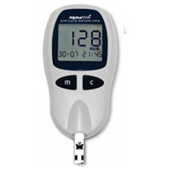Diabetes mellitus is most common in older animals, but it can occur in animals of any age. The disease develops when the pancreas fails to produce adequate levels of insulin for the body to properly use sugars, proteins, and fats. Diabetes in pets may be genetic or may occur as a result of obesity, pancreatic inflammation, long-term glucocorticoid use, or other causes.
Without careful control, diabetes can lead to cataracts, liver disease, immune dysfunction, neurological problems, and death. Part of controlling the condition means careful regulation of blood glucose levels with insulin. In most cases, administration of medication and testing can be done at home to reduce costs and stress.
Treating Diabetes in Pets
Treating diabetes is a complicated process aimed at stabilizing glucose levels, reducing weight, preventing complications, and improving energy and quality of life for your pet. It cannot be done without input from a veterinarian, and attempting to treat your diabetic pet without medication or veterinary care is dangerous.
"Without careful control and treatment, diabetes can lead to cataracts, liver disease, immune dysfunction, neurological problems, and death."
Most animals respond well to a combination of dietary changes and daily insulin injections. Of course, a strict injection schedule and tight control of caloric intake is important. Oral hypoglycemic medications can effectively manage drops in blood glucose caused by excessive activity, illness, or overdose of insulin.
Weight management is essential to treating diabetic pets, especially in overweight or obese animals. Obesity significantly impairs tissue responsiveness to insulin, which in turn leads to increasing glucose levels and poor diabetes control. If your pet is overweight or obese, speak with your veterinarian about weight loss plans.
Monitoring Glucose at Home
Blood glucose monitoring is an essential part of measuring the effectiveness of a specific medication or overall treatment plan. Kits, such as AlphaTRAK, are available to make home testing simple and accurate. If testing indicates your pet's current therapy is not working, your veterinarian can adjust the plan to stabilize blood sugar levels and prevent complications.

Monitoring should continue throughout life, even if your diabetic pet has been stable for some time. This is because age and other health conditions can significantly alter response to diabetes medications or trigger a worsening of your pet's condition.
Keep in mind, glucose levels fluctuate normally throughout the day and with activity. For example, your pet's glucose levels are likely be lower after a period of lying outside in the sun or running around the yard, whereas visitors or other stressors may trigger a slight increase in blood glucose levels. Eating also affects blood sugar levels, and testing times should consider meals and snacks.
If testing indicates a problem, consult your veterinarian immediately for advice. Do not alter your pet's medication dosages at home or make dietary changes without permission. Doing so can cause illness or death. Working closely with your veterinarian ensures the best possible future for your pet with the lowest risk of complications.
Sources
http://pets.webmd.com/dogs/diabetes-dogs-symptoms-treatments-dietary-management
http://www.vetmed.wsu.edu/cliented/diabetes.aspx
The above is provided for information purposes only and should not be used for the diagnosis or treatment of any condition.
This information does not cover all possible variables, conditions, reactions, or risks relating to any topic, medication, or product and should not
be considered complete. Certain products or medications may have risks and you should always consult your local veterinarian concerning the treatment of
your pet. Any trademarks are the property of their respective owners.